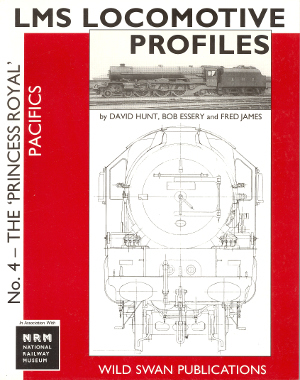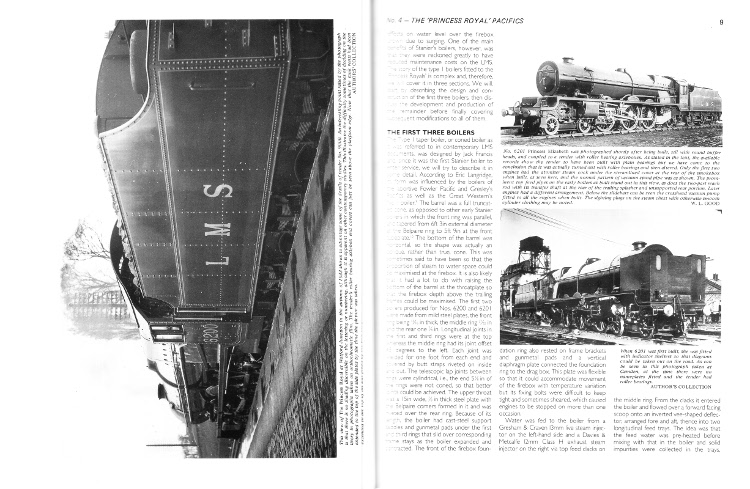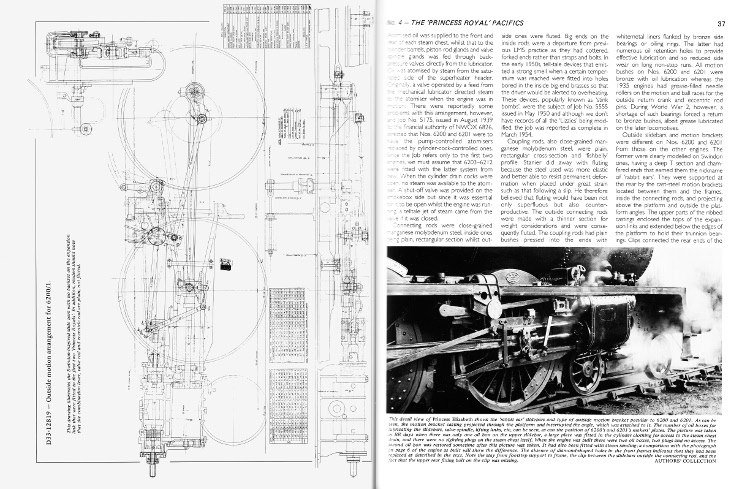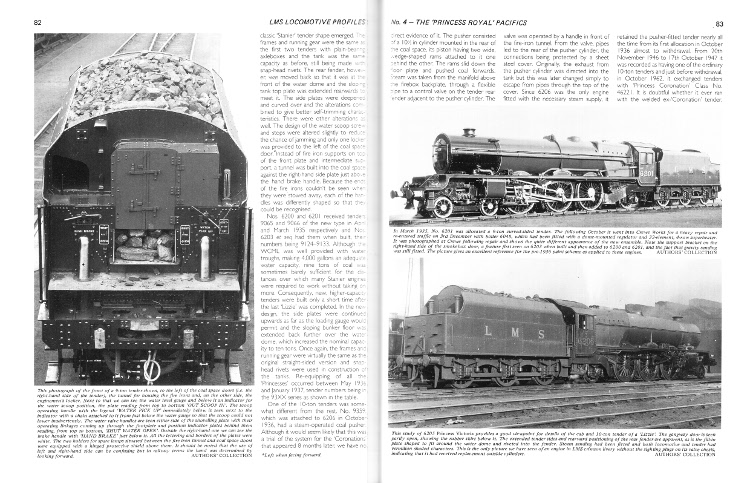Wild Swan Books
The Princess Royal Pacifics
LMS Loco Profile No.4
David Hunt, Bob Essery & Fred James

Softback - 112 pages - £14.95
Contents- Origins
- The Midland Engines
- LMS Locomotives
- Construction and Modification
- Boilers
- Cylinders & Motion
- Frames
- Wheels, Brakes & Sanding
- Bogie & Pony Truck
- Platform, Splashers & Cab
- Speed Recorders & AWS
- Tenders
- The Engines in Service
- Livery
- LMS Crimson Lake
- LMS Lined Black
- BR Black, Blue, Green & Maroon
The fourth in the series of LMS Locomotive Profiles considers the first true Stanier design, which appeared in 1933. According to several writers with first-hand experience, prior to 1932 the internecine squabbles within the various departments of the LMS to do with the design, provision and operation of locomotives had done little either to enhance the company's reputation or to optimise its locomotive stock. Whilst it is true to say that there had been some good post-Grouping designs produced, such as the Horwich moguls, 'Royal Scots' and 2-6-4 tank engines, there were also poor to mediocre ones like the 2-6-2T and 7F 0-8-0s.
When William Stanier was brought in from the GWR to take charge of LMS locomotive affairs, therefore, he was seen by many as its potential saviour and the shape of his designs was awaited with great interest. The first one turned out to be a big express passenger engine of a type not seen before on the LMS or its constituents - in fact, not seen to any great extent on most British railways and was not immediately outstanding, although it adequately did the job for which it was designed. Some of its problems were caused by ideas that Stanier had brought with him from the Great Western but, fortunately, he was not a man hide-bound by preconceived notions and so solutions were found. The result was a class of excellent machines that laid the foundation for what was arguably the best express passenger design ever to run on a British railway - the 'Coronation' Pacific - as well as the Stanier marque in general.
Although comprised only twelve locomotives, boilers and fittings, fireboxes, frames, pony trucks, cylinders, motion and tenders all exhibited wide variation, both as built and due to subsequent alterations. The 'Turbomotive', No. 6202, has not been included as it was very different from the rest of the 6200 to 6212 series both in its turbine driven form and after rebuilding as a conventional reciprocating locomotive in 1952.
The book is extensively illustrated and includes thirty-two detailed drawings, two at large format, printed on a fold out page bound into the book. The Appendices include building, rebuilding, renumbering and withdrawal dates, plus shed allocation dates for each of the twelve engines.
Example Two Page Spread [1]

Example Two Page Spread [2]

Example Two Page Spread [3]
